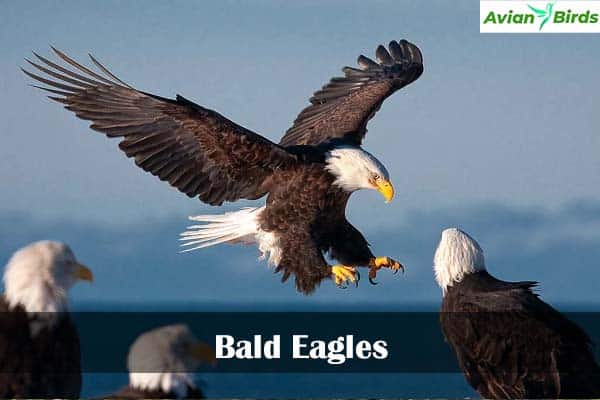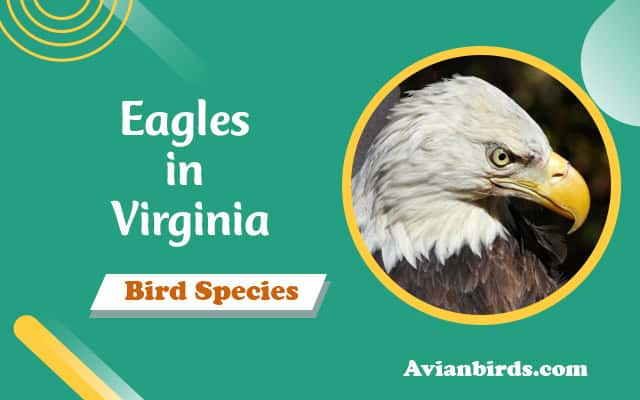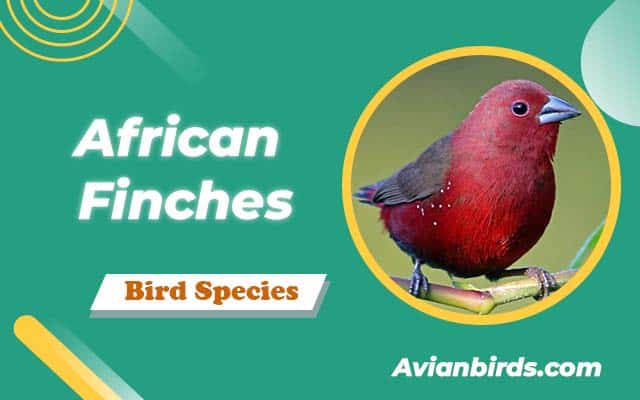2 Types of Eagles Found in Virginia! (With Pictures)
Did you know the Bald Eagle can have a wingspan of up to 7.5 feet? In Virginia, we see two amazing eagles: the Bald Eagle and the Golden Eagle. These birds are key to our local wildlife and show us how healthy our environment is.
We’ll explore the world of eagles in Virginia. We’ll talk about how to tell them apart, where they live, how they nest, and how we protect them. From the famous white-headed Bald Eagle to the rare Golden Eagle, we’ll share important info for bird lovers, conservationists, and nature fans.
Introduction to Eagles in Virginia
Virginia is home to two amazing eagle species: the Bald Eagle and the Golden Eagle. These eagles are key to our ecosystems. They keep wildlife populations in balance. Bird watchers love to see these birds because of their big wings and beautiful looks.
In the 1970s, eagles almost disappeared because of DDT. But thanks to the Endangered Species Act of 1973, they came back, supported by the Virginia Department of Wildlife Resources. In 2007, Bald Eagles were no longer on the endangered list. Now, we work to protect their homes and fight threats like lead poisoning and losing their habitats.
Seeing eagles in Virginia shows us the success of protecting wildlife. Bird watching helps us learn more about these amazing birds. It also supports efforts to keep them safe for the future.
1. Bald Eagle
- Scientific Name: Haliaeetus leucocephalus
- Size: 28-40 inches
- Weight: 6.5-14 pounds
- Lifespan: 20-30 years (up to 50 years in captivity)
- Diet: Primarily fish, also birds, mammals, and carrion
- Call: High-pitched, whistling chirps
- Speed: 30-35 mph (up to 100 mph in a dive)
Exploring the bald eagle’s world is fascinating. We must focus on its unique features and where it lives in Virginia. This bird, a national symbol, has traits that set it apart from other raptors.

Identification Features of the Bald Eagle
The bald eagle is a big bird with striking colours. Adults have a white head and tail against a dark brown body. Their wingspan is impressive, often bigger than the Great Blue Heron’s.
Young eagles look different, with mottled brown feathers. It takes about five years for them to grow into their adult look. Their sharp yellow beak is also a key identification feature.
Habitat and Distribution in Virginia
The bald eagle’s habitat is crucial for its survival. In Virginia, they thrive near big bodies of water. The Chesapeake Bay has the most bald eagles in the U.S. outside Alaska.
There are about 3,000 breeding pairs in this area. The Potomac River is also important, especially between Route 30 is the approximate number of active bald eagle nests monitored by the Center for Conservation Biology.1 bridge and Reagan National Airport. It offers places to hunt and nest.
Eagles like lakes, rivers, and marshes for hunting fish. They also eat deer when they can. But, lead poisoning from eating lead bullets is a big danger to them.
| Identification Features | Details |
|---|---|
| Adult Plumage | White head and tail with dark brown body |
| Juvenile Plumage | Mottled brown feathers |
| Wingspan | Greater than that of the Great Blue Heron |
| Beak Color | Bright yellow |
| Habitat | Lakes, rivers, marshes, reservoirs |
| Main Feeding | Primarily fish scavenge deer carcasses |
Related Article: Eagles in Florida
2. Golden Eagle
- Scientific Name: Aquila chrysaetos
- Size: 26-40 inches
- Weight: 6-15 pounds
- Lifespan: 15-20 years (up to 30 years in captivity)
- Diet: Small to medium-sized mammals, birds, reptiles
- Call: Weak, high-pitched whistling
- Speed: 30-50 mph (up to 150 mph in a dive)
The golden eagle is a majestic bird of prey in Virginia. It has a wingspan of six to seven feet. Its dark brown body shines with a golden sheen on the neck.
Adult eagles have uniform plumage. Young eagles have white patches on their wings. This makes them easy to spot.

Learning about the golden eagle’s behaviour is fascinating. It soars with its wings slightly raised. Its sharp eyes can spot prey from high up.
Golden eagles in Virginia’s Appalachians hunt differently than those in the West. Wildlife biologist Jeff Cooper and his team studied over 35 eagles. They used GPS transmitters to track their movements and breeding areas.
Habitat Preferences in Virginia
In Virginia, golden eagles love the mountains, especially the Appalachians. They prefer open areas and cliffs. They nest in small forest openings along ridges.
This helps them hunt better. Eagles migrate between October and December to the south. They return in April and May.
Highland County is a great place to see eagles in winter. It’s perfect for eagle-watching.
Related: Eagles In Alaska
Eagles in Virginia: Their Nesting Habits
Eagles in Virginia are amazing for their nesting habits. They build big nests, often several feet wide, made of sticks. These nests can weigh up to 1,000 pounds and are high up in trees or cliffs.
They pick places close to water. This makes it easy to find food and keeps the eaglets safe from ground threats.
Nest Structures and Locations
Looking at eagle nests in Virginia, we see some key features:
- They use big sticks and branches to build.
- Nests are built high up in trees or cliffs for safety.
- Being high up helps protect them from ground predators.
This smart nesting helps protect young eagles. For example, a nest on the NCTC campus has been used since 2003. Eagles often come back to the same spot to build their nests.
Breeding Population and Pairing
Eagles form long-lasting pairs, often staying together for life. This helps them raise eaglets better together. Virginia’s Bald Eagle breeding population has grown a lot, with about 3,000 pairs now.
This is a big improvement from the 1970s when only 33 pairs were found in the state.
Eagles’ nesting habits are key to their success. For example, a nest had three eggs this season. Sadly, one egg didn’t make it. This shows how delicate life can be, even in strong populations.
Watching eaglets grow fast in their bald eagle nest shows how important parents are. They teach eaglets how to survive.
The eagle population in Virginia is doing well thanks to conservation. Their nesting habits and behaviours teach us about our ecosystem’s diversity.
Bald Eagle Population Recovery
The story of the bald eagle in Virginia is truly inspiring. Once on the brink of extinction, these birds faced many challenges. Habitat loss and pesticides like DDT were major threats. But, thanks to the Endangered Species Act (ESA) in 1973, their recovery began.
History of the Bald Eagle in Virginia
In 1973, Virginia had only 30 bald eagle breeding pairs. This showed how bad things had gotten. The ESA helped start a big change. By 2021, there were over 1,500 breeding pairs, a huge comeback.
Important steps included buying key habitats for the Virginia bald eagle. The National Wildlife Refuge System helped protect these areas. This was crucial for the eagles’ nesting sites.
Current Population Status and Trends
By 2023, Virginia’s bald eagles were doing well. About 3,000 breeding pairs lived in the Chesapeake Bay. This is a big jump from before.
This area has always had a lot of bald eagles. Thanks to conservation, this trend continues. But, there are still dangers. Lead poisoning from bullets is a big problem. It can hurt the eagles’ growth and threaten their recovery.
| Year | Breeding Pairs in Virginia | Significant Event |
|---|---|---|
| 1973 | 30 | Bald eagles are classified as an endangered species |
| 1988 | N/A | Bald eagle downlisted |
| 1999 | N/A | The bald eagle delisted as an endangered species |
| 2016 | N/A | Annual survey ended |
| 2021 | 1,500 | The population continues to grow |
| 2023 | 3,000 | Current estimate of breeding pairs |
We must keep working to protect the bald eagle, especially in Northern Virginia. We need more conservation and to raise awareness. This will help these amazing birds for years to come.
Golden Eagle Migration Patterns
The golden eagle shows amazing migration patterns. These patterns show how adaptable and smart these birds are. By studying these paths, we can better protect them.
Migration Paths in Virginia
Golden eagles travel through Virginia, using the mountains as guides. They start migrating as early as August 11 and finish by December 17. The eagles go in different ways based on where they live.
Young eagles join the adults in October. They spend the winter in many places, from Maine to Georgia. This shows how important our ecosystems are for these birds.
Tracking and Research Initiatives
We use GPS to track golden eagles. Since 2008, we’ve learned a lot about their travels. For example, some eagles go to the mid-Atlantic for winter and breed in Eastern Canada and Maine.
Our research shows we need to keep watching and protecting these eagles. They face dangers like losing their homes and getting hurt by electricity. Working together, we can save these amazing birds.
| Migration Type | Time Frame | Duration |
|---|---|---|
| Fall Migration – West | August to November | 6 to 47 days |
| Fall Migration – East | August 11 to December 17 | Average 52 days |
| Spring Migration – West | March 4 to April 13 | 6 to 27 days |
| Spring Migration – East | February 4 to May 15 | 29 to 37 days |
Tips for Spotting Eagles in the Wild
Virginia is great for eagle-watching. It has many places to see wildlife. Knowing where and when to look can help us see eagles.
Best Locations for Eagle Watching
Virginia has many good spots for eagle-watching. Here are some of the best places:
- Mason Neck State Park
- Chesapeake Bay
- Potomac River Wildlife Refuges
- Lake Anna State Park
- James River National Wildlife Refuge
These places have lots of eagles, especially in winter. They come to areas with food when it’s cold.
Timing and Seasonality for Better Sightings
Winter is the best time to see eagles in Virginia. Bald Eagles come to fish in frozen lakes and rivers. The best times to see them are early morning and late afternoon, around 4 to 5 p.m. They hunt for fish then.
Bald Eagles are common, but we might see Golden Eagles in late fall and early spring. Seeing these birds makes wildlife watching more exciting.
| Location | Best Time for Eagle Watching | Type of Eagle |
|---|---|---|
| Mason Neck State Park | Winter, Early Morning, Late Afternoon | Bald Eagle |
| Chesapeake Bay | Winter, Early Morning, Late Afternoon | Bald Eagle |
| Potomac River Wildlife Refuges | Winter, Early Morning, Late Afternoon | Bald Eagle |
| Lake Anna State Park | Winter, Early Morning, Late Afternoon | Bald Eagle |
| James River National Wildlife Refuge | Winter, Early Morning, Late Afternoon | Bald Eagle |
By going to these places at the right times, we can easily see eagles, particularly with the help of the Virginia Department of Wildlife Resources. Happy eagle-watching!
Importance of Eagles in Virginia’s Ecosystem
Eagles are key to Virginia’s ecology. They help keep the balance in our ecosystems. As top predators, they manage fish and other prey populations.
This keeps the environment healthy and diverse. Eagles are important in both water and land ecosystems.
Eagles also show that our environment is thriving. They remind us to protect natural habitats. These birds affect other wildlife and the food chain.
Protecting eagles has paid off. Conservation efforts have helped them flourish. Laws and research help eagles survive and thrive in Virginia.
Eagles add to our biodiversity. They remind us of the connection between all wildlife in Virginia. They make our environment richer and more diverse.
Frequently Asked Questions
Q1. What type of eagles live in Virginia?
The Bald Eagle and the Golden Eagle are found in Virginia.
Q2. Are eagles rare in Virginia?
No, Bald Eagles are not rare in Virginia, particularly along coastal areas and near large rivers.
Q3. Where can I see bald eagles in Virginia?
Bald Eagles can be seen at places like the James River, the Chesapeake Bay, and the Rappahannock River.
Q4. What is the population of the bald eagle in Virginia?
The population of Bald Eagles in Virginia is estimated to be over 1,000 nesting pairs.
Q5. What US state has the most eagles?
Alaska has the most Bald Eagles in the United States.
Q6. Is it rare to find a bald eagle?
It is not particularly rare to find a Bald Eagle in areas where they are common, like near large bodies of water and in certain states like Virginia and Alaska.







